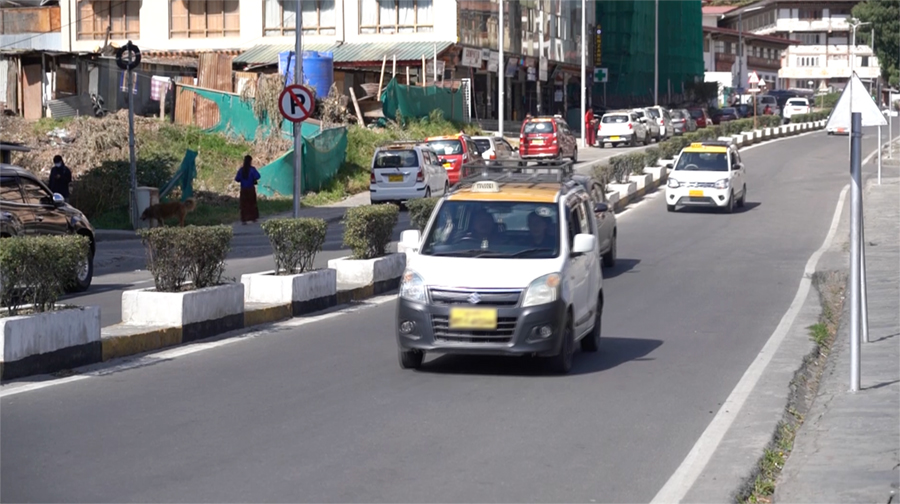
It has been around four days since Thimphu’s Traffic Division started a one-week pilot programme for taxis to use the left lane along the expressway to ease the traffic congestion. Although taxi drivers welcome the initiative, not many are currently seen using the lane. According to the traffic division, the initiative will run until Saturday, allowing officials to observe its impact on congestion and make decisions accordingly.
What usually takes around 10 minutes to travel from Babesa to town takes 10 minutes more during the peak commuting hours. The congestion along the expressway has been slowing vehicle movements.
To keep traffic flowing smoothly and make the commute quicker, the traffic division now plans to dedicate the left lane to commercial vehicles, especially taxis. Officials will monitor the flow of vehicles for a week, and if it proves successful, they plan to implement the initiative permanently.
 Although most taxi drivers welcome the initiative, not many are seen using the left lane.
Although most taxi drivers welcome the initiative, not many are seen using the left lane.
Pempa, a taxi driver said “For us, this setup works well. Using the left lane for pick-ups and drop-offs is more convenient, especially since our passengers get in and out from the left side of the car. If we’re in the right lane, it’s harder to switch over to the left when we need to pick someone up or drop them off.”
Sangay Wangchuk, another taxi driver said “It would be convenient if we stay in the left lane. But if they allow us to use the right lane during emergencies, it would be helpful. They however should clearly define what counts as an emergency.”
Thinley Dorji, who is also a taxi driver said “This would be more convenient because our taxis are supposed to be where the passengers are”
According to the traffic division, it will also enhance overall convenience for passengers and safety.
This isn’t the capital’s first experiment with traffic management. Last year, the city introduced a bus priority lane along the left side of the expressway. However, the initiative faced challenges, including enforcement difficulties.
As the pilot phase unfolds, only time will tell if this initiative succeeds where the previous one struggled.
Samten Dolkar
Edited by Sangay Chezom








